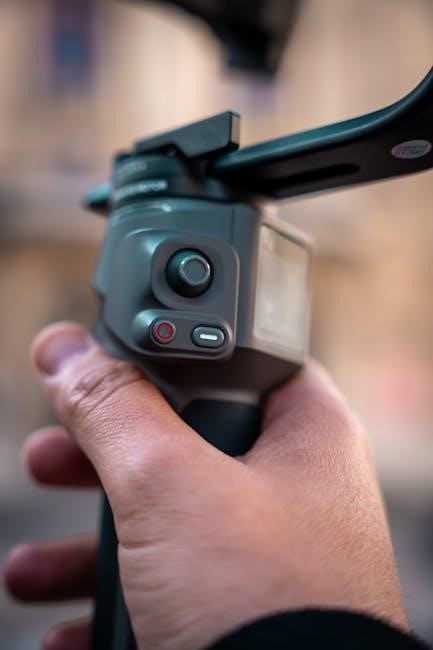Craftsman air compressor owners manuals are vital resources. They offer detailed information on safety‚ operation‚ and maintenance. These manuals ensure proper use‚ extending the life of your compressor and preventing potential hazards. Understanding the manual is key to maximizing the tool’s performance.
Understanding Your Craftsman Air Compressor Model
Identifying your specific Craftsman air compressor model is crucial. This ensures you access the correct owners manual. The manual contains model-specific information on parts‚ operation‚ and troubleshooting. Using the right manual optimizes safety and performance for your compressor.
Finding the Model Number
Locating the model number on your Craftsman air compressor is essential for accessing the correct owners manual. Typically‚ the model number is found on a metal data plate. This plate is usually affixed to the compressor’s tank or frame. Look for a series of numbers and letters‚ such as “919.xxxxxx” or “CMECxxxxx‚” as this is your identifier.
This number allows you to find specific details about your compressor. It provides information on its specifications‚ parts‚ and compatible accessories. Accurate identification ensures you follow the proper maintenance and safety procedures. It also helps in ordering the correct replacement parts. Always double-check the number against the manual for accuracy.
Safety Guidelines and Precautions
Prioritize safety when using your Craftsman air compressor. Always read the owners manual for complete safety guidelines. Following precautions reduces the risk of injury. Ensure proper setup and maintenance for safe operation.
Electrical Safety
Always adhere to electrical safety guidelines when operating your Craftsman air compressor. The owners manual specifies correct voltage requirements. Ensure the circuit has sufficient amperage‚ ideally a dedicated 15 amp circuit. Avoid using extension cords if possible; prioritize a longer air hose. Before any maintenance‚ disconnect the power supply. Inspect power cords for damage before each use. Never operate the compressor in wet conditions to prevent electrical shock. Ground the compressor properly‚ following the manual’s instructions. Ignoring these precautions can lead to serious injury or damage. Always prioritize your safety by carefully following electrical safety protocols.
Operating Safety
Prioritize operating safety when using your Craftsman air compressor‚ consulting the owners manual for specific guidelines. Always wear appropriate safety gear‚ including eye protection‚ to prevent injury from debris. Ensure the work area is well-ventilated to avoid inhaling compressed air. Never exceed the compressor’s maximum pressure rating. Regularly check hoses and fittings for leaks before operation. Release all air pressure before performing maintenance. Keep children and pets away from the operating area. Be aware of noise levels and use hearing protection if necessary. Do not operate the compressor near flammable materials. Following these safety measures ensures safe and efficient operation‚ reducing the risk of accidents.
Assembly and Initial Setup
Proper assembly and initial setup are crucial for your Craftsman air compressor. Consult the owners manual for step-by-step instructions. Ensure all parts are present. Follow the guidelines to guarantee safe and efficient operation.
Installing the Air Filter
Installing the air filter on your Craftsman air compressor is a simple yet essential step. Refer to your owners manual for the exact location of the intake port. Remove any plastic plugs that may be present. Carefully insert the air filter into the designated port. Ensure it is securely in place to prevent dust and debris from entering the compressor. A clean air filter prolongs the life of your compressor and maintains optimal performance. Regular inspection and replacement of the air filter‚ as outlined in the manual‚ will help ensure longevity.
Operating Instructions
The operating instructions section of your Craftsman air compressor’s owners manual provides guidance. It covers safe start-up‚ shutdown procedures‚ pressure adjustments‚ and recommended usage guidelines to ensure efficient and safe operation of your equipment.
Turning On and Off
The Craftsman air compressor’s owners manual provides explicit instructions for safely turning the unit on and off. Before turning on‚ ensure the power switch is in the “off” position. Connect the compressor to a dedicated 15-amp circuit‚ avoiding extension cords if possible‚ using a longer air hose instead.
To turn on‚ flip the power switch to “on‚” allowing the tank to fill to the cut-out pressure‚ as specified in the manual. Once the desired pressure is reached‚ the motor will automatically shut off. To turn off‚ simply switch the power switch to “off‚” effectively halting the compressor‘s operation. Always unplug when not in use.
Adjusting the Regulator
The Craftsman air compressor’s owners manual details how to properly adjust the regulator. The regulator controls the air pressure delivered to your tools. Before adjusting‚ ensure the compressor is on and the tank has sufficient pressure. Locate the regulator knob‚ usually found on the control panel.
To increase pressure‚ turn the knob clockwise; to decrease it‚ turn counter-clockwise. Monitor the pressure gauge while adjusting to reach the desired PSI setting for your specific application. Always stay within the safety standards outlined in the manual. After adjusting‚ lock the regulator knob to maintain the set pressure during operation.
Maintenance Procedures
Regular maintenance‚ as outlined in your Craftsman air compressor owners manual‚ ensures optimal performance and longevity. Key procedures include draining the tank‚ checking for leaks‚ and replacing the air filter per the manual’s instructions.
Draining the Air Tank
Draining the air tank is a crucial maintenance step detailed in your Craftsman air compressor owners manual. Moisture buildup can cause rust and reduce efficiency. The manual provides clear instructions‚ usually involving opening a drain valve located at the bottom of the tank.
Regularly draining the tank‚ as specified in the manual‚ helps prevent corrosion and prolongs the life of your compressor. Consult your specific Craftsman manual for the recommended frequency and procedure‚ ensuring safe and effective operation while performing this important maintenance task. Always follow the manual’s safety precautions.
Checking for Leaks
Your Craftsman air compressor owners manual outlines how to effectively check for leaks. Leaks can reduce performance and waste energy. The manual typically suggests using a soapy water solution on connections and fittings‚ where bubbles indicate a leak.
Tightening fittings or replacing worn components may be necessary. Refer to your specific Craftsman manual for detailed diagrams and troubleshooting steps. Addressing leaks promptly‚ as instructed in the manual‚ ensures optimal efficiency and prevents further damage. Safety precautions should always be observed while inspecting your compressor for leaks using the recommended methods.
Troubleshooting Common Issues
The Craftsman air compressor owners manual provides solutions for common problems. These include the compressor not starting‚ low pressure‚ or unusual noises; The manual guides users through diagnostic steps‚ ensuring safe and effective repairs.
Compressor Not Starting
If your Craftsman air compressor fails to start‚ the owners manual offers several troubleshooting steps. First‚ confirm the unit is properly plugged into a functioning 15 amp circuit. Check for tripped breakers or blown fuses in your electrical panel. Ensure the power switch is in the “on” position. Examine the pressure switch for any signs of damage or malfunction‚ refer to the manual for specific testing procedures. Verify that the air tank is not already at its maximum pressure‚ preventing the motor from engaging. If these steps don’t resolve the issue‚ consult a qualified technician.
Low Pressure Output
Experiencing low pressure from your Craftsman air compressor? The owners manual is your first point of reference. Begin by inspecting the air filter; a clogged filter restricts airflow. Next‚ check all hoses and connections for leaks‚ using soapy water to identify escaping air. Verify the regulator is properly adjusted to the desired pressure setting‚ consulting the manual for correct adjustment procedures. Examine the check valve for proper function‚ ensuring it’s not stuck or damaged. If the problem persists‚ the pump may require inspection or repair by a qualified technician‚ as detailed in the manual.
Warranty Information
Understanding the warranty for your Craftsman air compressor is crucial. Typically‚ Craftsman offers a limited warranty‚ often for one year from the purchase date‚ covering defects in materials or workmanship. To make a claim‚ retain your purchase receipt as proof of purchase. The warranty may require returning the compressor to a Sears service center or authorized repair facility. The warranty might be voided if the compressor is used commercially or for rental purposes. Consult your owners manual for specific warranty terms‚ exclusions‚ and claim procedures. Always adhere to the warranty guidelines for valid coverage.
Parts List and Diagrams
The parts list and diagrams section in your Craftsman air compressor owners manual is essential for maintenance and repairs. This section provides a detailed breakdown of all compressor components. Each part is identified with a specific number‚ facilitating easy ordering of replacements from Sears Parts Direct or authorized dealers. The diagrams offer visual representations of how the parts fit together‚ aiding in assembly and disassembly. Refer to this section to identify components like the pressure switch‚ check valve‚ air filter‚ and tank. Accurate part identification ensures correct replacements‚ extending the life of your compressor.
Downloading Manuals
Accessing your Craftsman air compressor owners manual is now easier than ever. Many resources offer downloadable manuals in PDF format. Websites like ManualsLib and Sears Parts Direct host a vast collection of Craftsman manuals. Simply search for your specific model number to find the correct manual. Downloading the manual allows for offline access‚ making it convenient to consult safety guidelines‚ operating instructions‚ and troubleshooting tips. Keep a digital copy on your devices for quick reference during maintenance or repairs. Always ensure you download from reputable sources to avoid malware.


